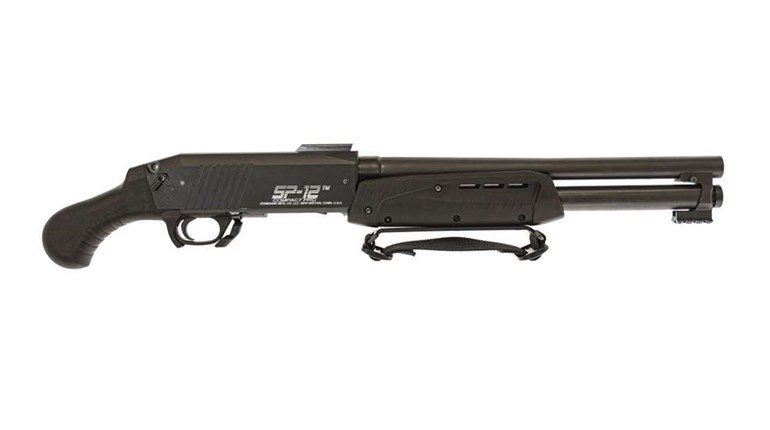
On rifles, handguns and some shotguns, iron sights normally consist of a front sight and a rear sight. Of the two, the front sight should be the shooter's primary focus. Both are mounted on the upper surface of the firearm parallel to the axis of the bore. In use, the sights are aligned with the target by the shooter's eye to produce repeatable hits. There are six general types of iron sights; today, we will cover two.
Aperture or Peep Sight
In this sighting system, the rear sight consists of a small disk with a centerhole (or "iris") through which the shooter views the front sight and the target. The front sight may be a post, bead or another aperture. Such sights make use of the eye's natural tendency to center objects viewed through the aperture. Most aperture sights are adjustable for both windage and elevation. A variation uses two apertures on an L-shaped rear hinged to the sigh body at the junction of the two arms. One aperture is set for one range, and the second for a different range.
The accuracy obtainable with a quality micrometer peep sight rivals that achieved with telescopic sights. For this reason, aperture sights are preferred for iron-sighted target rifles. Aperture size is critical. In general, smaller apertures offer greater sighting precision, but at the cost of reduced light transmission. For this reason, apertures with adjustable irises are a popular choice.
Because of their simplicity and accuracy, aperture sights have often been found on military rifles. Normally, such sights have protruding "ears" on both sides to protect the front post and rear aperture from damage.
The "ghost-ring" sight is a special variation of the peep sight. This sighting system employs a rear sight with a large-diameter aperture through which the front sight is viewed. When the shooter's eye is focused on the front sight, the rear sight appears as an indistinct, ghostly ring surrounding it. Ghost-ring sights work on the principle that the eye will automatically center any object seen through the ring. This provides a reasonable level of accuracy, but not to the level of conventional aperture sights. On the positive side, the large ring blocks little of the shooter's view while allowing fast target acquisition. This is the reason ghost-ring sights are popular on shotguns and carbines used for military, law enforcement and civilian home-defense use.
Post-and-Notch Sight
This type of sight consists of a vertical rear sighting blade with a square notch cut in the center, teamed with a front post with parallel sides and a flat top. In use, the post is centered in the notch, with equal amounts of "daylight" visible on either side, and the top of the post is aligned with the top of the rear blade. On handguns, this type of sighing system is known as a Patridge sight.
This type of sight is extremely accurate, although the rear blade may obscure part of the target. For precise target work, a thick front post that leaves only a sliver of daylight visible on either side of the notch is preferred. For faster combat shooting, a thinner post is generally in order.
In low-light situations or against a dark target, the flat black blade and matching notch may be difficult to see. For such situations, post-and-notch sights are often enhanced with high-quality contrasting colors such as a white outline around the rear notch, a spot of fluorescent red or orange on the front sight, or three white dots...two on the rear blade flanking the notch, and one on the front post.
The advantage of three-dot sighting systems are offered in night sights. Such sights employ small glass ampules of self-luminous tritium set into the front and rear sights to form round dots that are visible even in complete darkness. Also popular is the "bar and dot" pattern, in which a tritium ampule is set sideways under the rear notch. Sighting alignment consists of centering the front dot over the rear bar. Many tritium inserts have a pale green color, though other colors may be used. Luminous sights may also be used in peep or post-and-notch sights on carbines or shotguns for defensive, police or military uses. They have become more common on hunting arms in recent years, as well.
Keep an eye on this space for the next kinds of sighting systems!





































